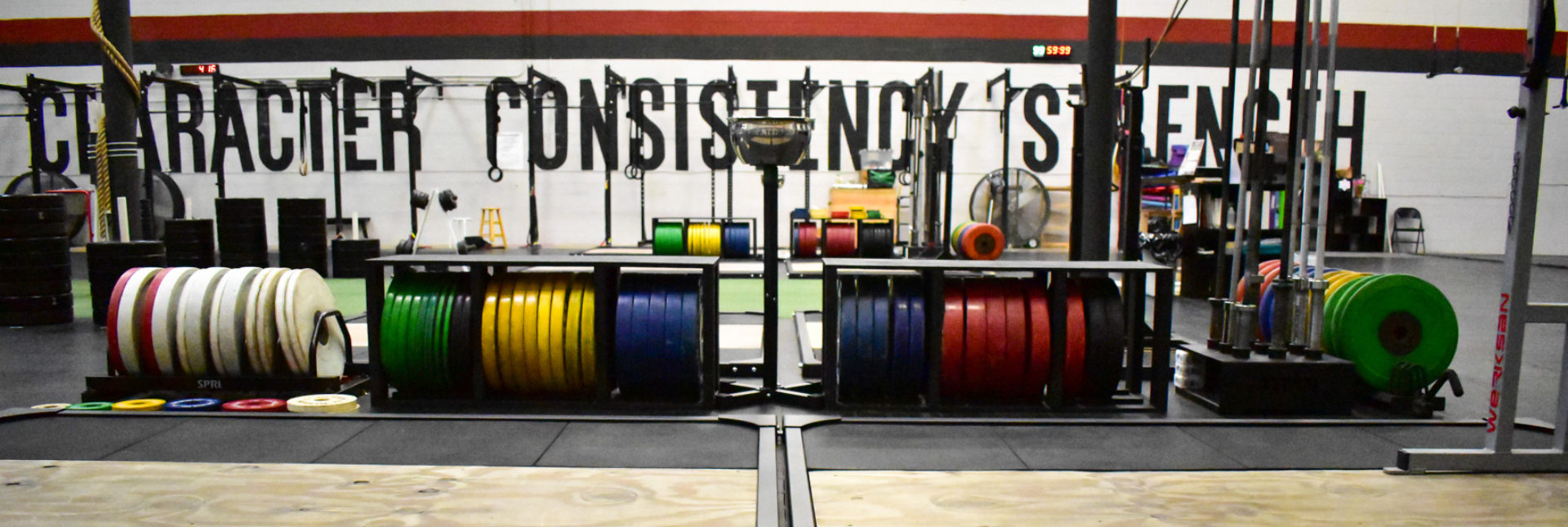The sport of Olympic-style Weightlifting is starting to explode. There are a few major contributing factors to this — the biggest two being 1) the rising availability and accessibility through social channels and 2) CrossFit. Yes, CrossFit. Whether or not you think the two communities should be intertwined, the truth is: they are…and the CrossFit community and weightlifting community can benefit equally from each other and live in harmony.
Why do I bring up CrossFit? Because it’s opening doors and exposing people (generally athletic, motivated, and in many cases strong people) to a sport that seemed to be on the decline before the age of the hashtag. People from the CrossFit community are becoming more interested in learning and/or specializing in the snatch and clean & jerk and it’s not only helping CrossFit with more specialized coaching, but it’s also doing wonders for the talent pool of USA Weightlifting. Obviously, I think this is a good thing, but newcomers to any sport should always know a few things about what they’re getting themselves into. Here are a couple of things (in no particular order) that someone new to weightlifting should know:
1) Find a coach.
A weightlifting coach. Since the popularity of weightlifting is rising, the desire to become a weightlifting coach is equally growing. A few months ago, I was at a USAW L1 Certification and the class was over 20…then again at another L1 certification in Fort Lauderdale that was almost 40 people. My point is, there are now a growing number of coaches, so how do you find a good one? In part 2 of “What is Olympic Weightlifting?” I listed a few qualities to look for when trying to find a good weightlifting coach. But some Cliff’s Notes would be: some sort of specialization in the sport, a weightlifting certification of some kind, competition experience (both for themselves and through taking athletes), and an open mind.
2) This is not a sport of instant gratification.
Let me just say that this is not meant to discourage you from weightlifting, but it’s crucial to understand that learning how to lift or improving your lifts isn’t something that will happen after “practicing” for 30 minutes. As a beginner in the first 1-2 years of lifting, you will probably experience a lot of gains or PRs simply because of learning and becoming more proficient with the technical aspects. Once you learn and discover your own technical mastery, your gains will tend to slow down. This is a sport that requires constant technique refinement and strength & athletic development. Don’t get caught up in rushing though the learning and development stages because you want to do what [insert famous lifter here] is doing on Instagram.
3) Use a hook grip.
I catch people skipping out on this all. The. Time. This is non-negotiable. Do it. I know it hurts, I know it’s uncomfortable, but it is necessary. Sooner or later, your thumbs will get used to it, build callouses, or just lose all feeling all-together. It’ll be great!
4) Buy a pair of weightlifting shoes.
In short, weightlifting shoes are the most important piece of equipment to a weightlifter. There are many different brands and styles ranging in price from $80 to over $200. What you buy is totally up to you, but any pair is better than no pair. These shoes are designed to aid with stability, positioning, and safety. You want to be SAFE, right?? Not sure which shoes to buy? Here are a couple of reviews to help you find what suits your fancy.
5) Learn the terminology.
WOD, AMRAP, EMOM…catch my drift? Just like CrossFit, weightlifting has its own set of terminology that might behoove you to learn. There are certain ways that different lifts are described, perhaps by the names of different positions: power position (which is different than a power version of a lift), hang, mid-hang, low-hang, lift-off; the different lifts: Snatch, power snatch, clean, power clean, jerk, clean and jerk; rep schemes: single, double, triple, etc. There are also plenty of accessory exercises that may come up over the course of your training that can be addressed as needed.
6) Learn the metric system.
Weightlifting is an international sport and everything is measured using the metric system (kilograms to be specific). If that’s weird to you, then you probably live in one of the three countries in the world that haven’t adopted the metric system. It’s really not that hard and kilos can be added together the same way that pounds can be. The numbers are smaller and even color coded, so the transition is easier than you think.
7) When in doubt, squat!
This is pretty much self-explanatory. Tell me if this sounds familiar: Your program says snatches to 90%. You’re hyped up to hit some heavy lifts, but once you start warming up, everything feels like garbage. You’re missing forward and behind, so you drop the weight and try to wave back up. Nothing. Today is not your day. You still have RDLs and squats left, but you really don’t feel like it after snatching like a n00b. You start to pack up and head for the car. Then you hear it. Your coach’s voice screaming from across the gym, “Where the hell are you going? FINISH YOUR SQUATS.” You: “I’m just not feeling it today, coach.” Coach: “Do you want to get better?” You: “Yeah, but I just feel off today.” Coach: “If you want to get better, go squat. If you want to suck and get weaker, go home.”
We do what we can and when we can with our training. If it’s not happening, shut it down, but always hit your squats.
8) Accessories are accessories, NOT necessities.
There are times when extra equipment serves a specific purpose in weightlifting. Say for instance you have some kind of knee injury and you’re told by your doctor to wear a brace for the first X number of weeks while you rehab your knee; or maybe indefinitely. I’m on board with that. But wearing knee sleeves, belts, wrist wraps, elbow sleeves, all kinds of tape, etc. just for the sake of wearing them serves absolutely no purpose. My philosophy is less is more and that applies to accessories as well.
Some people view weightlifting shoes as a physical crutch (if that sounds like you, please refer to number 4 above and follow this link), but I view accessories as a mental crutch. Granted, this doesn’t apply to 100% of everyone with a gym bag full of accessories, but I have seen people crumble mentally in training because they happened to forget their belt or knee sleeves at home. They become more timid under weights for fear of not wearing their “injury prevention devices.” I equate this kind of mental reliance to not being able to sleep without a blankie. While all weightlifters have some degree of training superstitions, we try not to create extra un-needed mental barriers. If you are a full-time accessory wearer, try to wean yourself off them in training. You may find that the extra breathing room will serve you well.
BONUS!
9) Your first weightlifting meet: make lifts.
Competition: that C word that sends people into a max out frenzy (…not to be confused with this “C” word). Yes, technically it is a competition, but in my eyes, novice lifters have one goal in their first weightlifting meet and that is to make lifts. Not make max out lifts, make good lifts in front of the judges. You might only touch 85% that day, and that’s okay. Your first meet is about gaining experience and working out the butterflies of basically being on a stage in spandex while in front of a crowd that is literally judging you. It can be a nerve-racking experience and it is our job as coaches to make sure that the experience is a successful one.
Get started today with 813 Weightlifting at www.KeepPulling.com/LIFT or contact us below!


